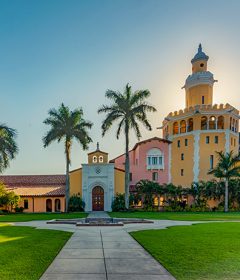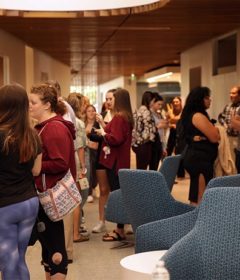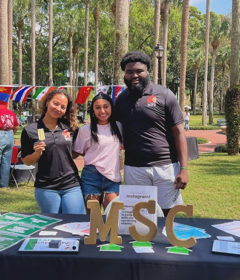Stetson’s Environmental Fellows conduct greenhouse gas audit
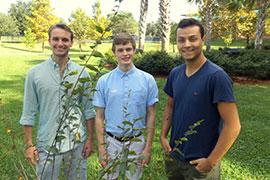
Senior Nathan Bodger confesses he used to be “kind of frantic” about addressing climate change and other environmental issues.
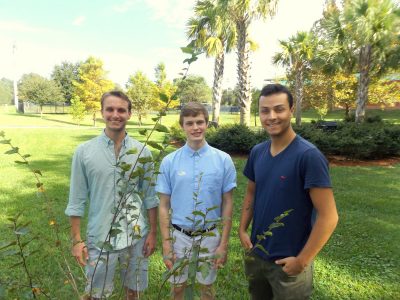
“In my freshman and sophomore years, I was more aggressive in the way I wanted to go about this,” says the religious studies major from Liverpool, England. “I was kind of shaking people like ‘We’re all going to die! The planet’s going to be like Dante’s inferno!’ ”
These days Bodger, whose minors include environmental science, philosophy, history and international studies, is both more reserved and more focused in his efforts. Bodger, along with first-year environmental science major Gabriel Rey and junior Matinicus Csenger, a double major in economics and philosophy, are all Stetson Environmental Sustainability Fellows.
Part of their duties as fellows includes conducting the university’s greenhouse gas audit, which Stetson began biannually in 2006 and annually since 2014, as part of its Environmental Sustainability initiatives.
The audit tracks the university’s carbon footprint – that is, how its numerous activities may be affecting the climate and contributing to global warming – and aids the school in finding ways to be responsible stewards of the environment. Environmental responsibility, Csenger noted, is included in Stetson’s mission and values statement.
Though the greenhouse effect is a natural occurrence around the earth, human activities have increased greenhouse gases and enhanced the greenhouse effect over the past 50 years, causing climate change, according to NASA at climate.nasa.gov.
Stetson’s greenhouse gas audit tracks “all of the activity done on campus in the name of the university that creates greenhouse gas emissions,” Bodger says. “So it isn’t just necessarily carbon dioxide. It could be any type of greenhouse gases like CFCs, any kind of refrigerant, fertilizers.”
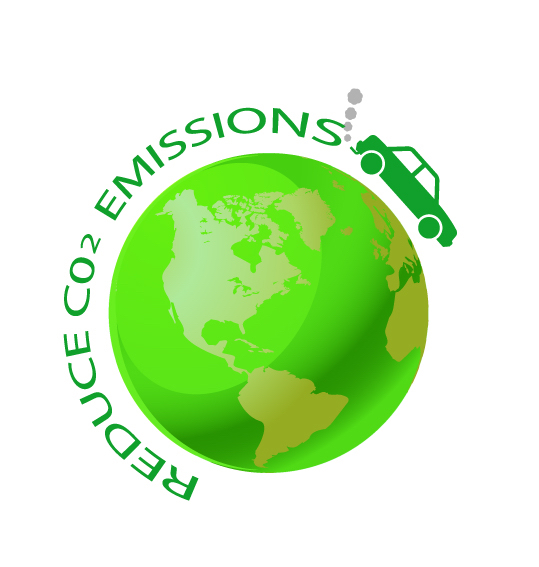 “The audit essentially asks us to find all this information within the university,” Csenger says. That includes “on-campus energy usage, how much waste we produce, how much waste water we produce that gets recycled back into the system, miles traveled by every department, study-abroad miles for all students — all of that.”
“The audit essentially asks us to find all this information within the university,” Csenger says. That includes “on-campus energy usage, how much waste we produce, how much waste water we produce that gets recycled back into the system, miles traveled by every department, study-abroad miles for all students — all of that.”
The environmental fellows gather data and reports “largely through email” from “each of the little silos within the school,” says Csenger, a Naples, Florida, native. The data includes, for example, reports from Facilities Management detailing the amount of fertilizer used on athletic fields and campus green spaces, and the amount of fuel used by the university’s fleet of golf carts and “P-Safe” (Public Safety) vehicles.
Calculating travel miles “is definitely the most difficult part of the audit,” says Bodger, whose career goal is to work in international environmental law. The fellows are given travel destinations, but “depending on the mode of travel, the way to calculate it is different for airline miles versus car miles. When there are hundreds of people traveling each semester, that adds up to a lot of time calculating that, but it’s gotten easier over time.”
New to the audit this year is a tree-mapping project initiated by Csenger, who plans to go into green energy development.
“Florida Forest Service members came last April to help with the Arbor Day tree planting (on campus),” Csenger says. “They explained to students how to properly plant the trees and the ecology of it all. I was just sitting around with them talking afterward and they happened to mention we can calculate how much carbon these new trees are going to absorb.”
That prompted Csenger to map the university’s trees. Using Google Earth and a software program, the project will map all of Stetson’s property in Volusia County, so that Csenger can tell whether “a latitude and longitude point is a tree, a piece of sidewalk, asphalt where cars can drive, grass or whatever.”
Once he has determined the percentage of the campus that is covered by a tree canopy, further data crunching will allow him to “estimate how much carbon our trees sequester each year,” Csenger says. “The more trees we plant, the more they’re going to sequester over their lifetime.”
A preliminary calculation determined that 35% of the campus is covered by trees. Csenger is re-running the calculation using more detailed, accurate campus boundary information from Facilities Management, and the project also will determine a monetary value of the CO2 that is sequestered.
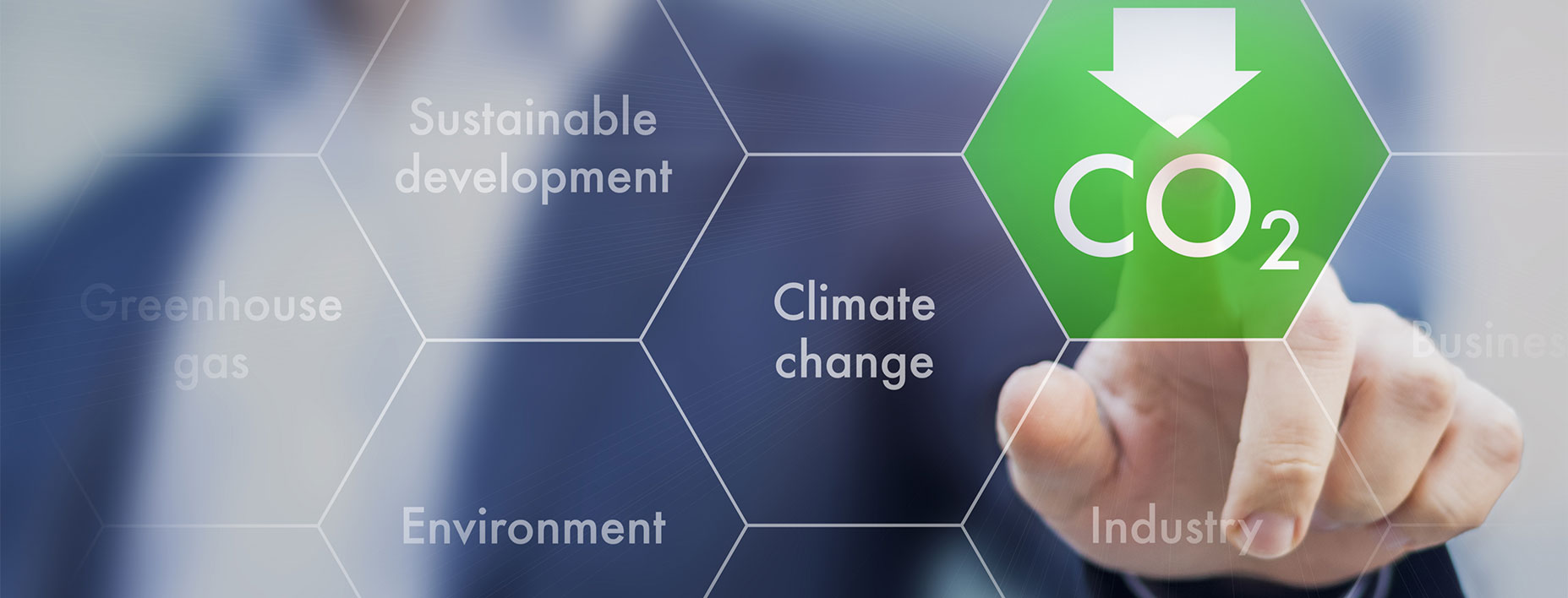
The fellows will input data from the greenhouse gas audit into SIMAP (Sustainability Indicator Management and Analysis Platform), a subscription software program created by the University of New Hampshire and located online at unhsimap.org. SIMAP “is a carbon and nitrogen-accounting platform that can track, analyze and improve your campus-wide sustainability,” the website says.
The fellows, under the guidance of faculty advisor Tony Abbott, Ph.D., associate professor of Environmental Science and Studies, will produce a report on the audit by March. (Abbott currently is on sabbatical and Robert Sitler, Ph.D., professor of World Languages and Cultures, Director of the Latin American and Latino Studies Program, and an avid environmentalist, is acting faculty advisor).
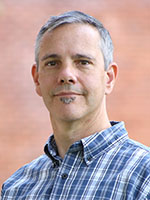
That report in turn will be shared with institutions that are part of the American College & University Presidents’ Climate Commitment (ACUPCC), a network of colleges and universities committed to neutralizing their greenhouse gas emissions.
The ACUPCC now operates under the auspices of Second Nature, a higher-ed sustainability network. According to its website, secondnature.org, “Through the ACUPCC, higher education has become the only sector in the U.S. with a critical mass committed both to the scientifically necessary goal of climate neutrality and to preparing students to develop the solutions for a just, healthy, and sustainable society.”
Stetson is one of Second Nature’s 596 active signatories and is part of the network’s “carbon commitment.” Stetson has set a goal to achieve “carbon neutrality” by 2050, according to the university’s Environmental Stewardship Plan, which spells out its many conservation efforts and other initiatives, such as building energy-efficient and environmentally responsible facilities.
Csenger is confident that the efforts of Stetson’s environmental sustainability fellows, the university and the Second Nature network can affect change.
“I think our generation is very willing to use whatever tools we give them,” Csenger says. “I think it’s our job as innovators to normalize a lot of this, to normalize any kind of environmental initiatives.”
— Rick de Yampert

